Christmas
Season Miniature Steins
by
Steve Steigerwald
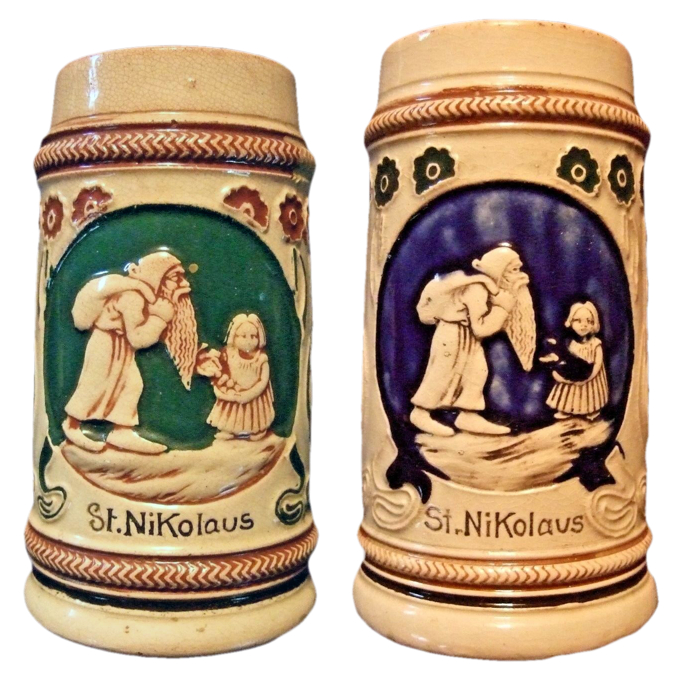
click on any image to enlarge
I have always been somewhat surprised that the celebration of
Christmas was not a popular subject on antique steins. Over the years I
have tried to add as many different Christmas related miniatures to my
collection as the budget, and common sense, allows.
The two unlidded steins shown above depict St. Nikolaus with a
satchel of gifts slung over his shoulder giving gifts of fruit, nuts
and a small toy to a young girl. The stein with the blue background is
slightly larger than the stein with the green background. Neither has a
lid, a capacity mark or any markings on the base.
The legend of Santa Claus has its origins in a monk from an area
that is now part of modern Turkey. Around 280 A.D. a monk named St.
Nikolaus gave away all of his wealth and travelled the countryside
helping the sick and poor. One of the most popular tales about St.
Nikolaus is that he saved three poor sisters from being sold into
slavery or prostitution by supplying their dowries. The legend is that
for each, he snuck into their home leaving a dowry of gold at night,
without telling them it was his doing.
St. Nikolaus died on December 6, the day that is celebrated as St.
Nikolaus Day in Germany. Traditionally, St. Nikolaus visits the houses
of children dressed in a red coat and hat and wearing a white beard. He
brings small gifts to all the children who have been good all year and
reprimands the naughty ones. In case he does not enter the house, the
children leave their shoes, stockings or a plate outside so that St.
Nikolaus can leave fruits, nuts or sweets for them.
Evergreen trees became
traditional in Germany decorated with wax candles. Normally there were
no other ornaments. Ornaments were added to the trees in the United
States and elves were added as Santa’s helpers. The traditions of more
extensive presents being left by Santa Claus is also attributed to the
Americanization of Christmas.
The Dutch brought the tradition of celebrating St. Nikolaus
Day to
the Untied States and reports of it made the newspaper in the late
1700s. St. Nikolaus (or Sint Nikolaas in Dutch) evolved to Sinter Klaas
which eventually was Americanized to Santa Claus. In 1822, Clement
Clark Moore wrote “An Account of a Visit from St. Nicholas” which is
responsible for our current version of Santa Claus and Christmas.
|
The next two steins also are
unmarked on their bases and have no capacity marks. The salt glazed
stein depicts a bearded and stocking-capped elf-like Santa Claus with
an open satchel of gifts approaching an evergreen tree which appears to
have fruit beneath it. The sides have cherubs playing drums and a
clarinet.
The next stein depicts three elves pulling and pushing a
sleigh
laden with a sack while the lead elf is carrying an ornament laden
Christmas tree with a star atop. On one side is an elf lifting another
sack, presumably filled with gifts. The opposite side depicts three
elves, one carrying the star for the top of the tree as well as baskets
filled with various items.
|
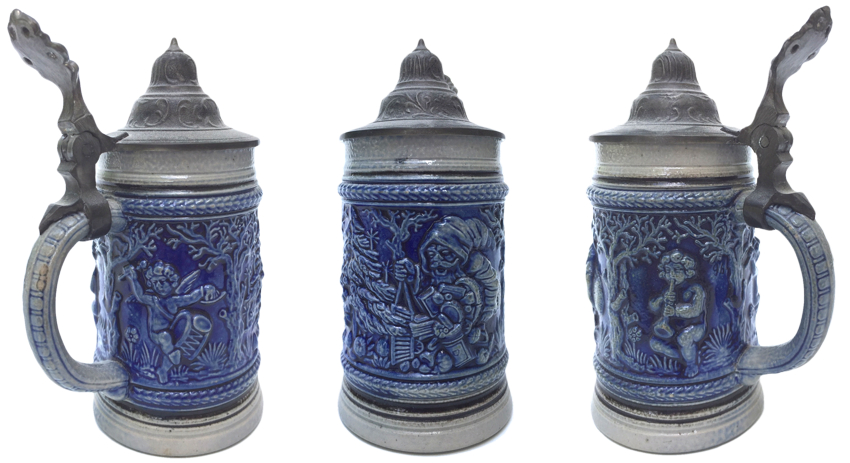
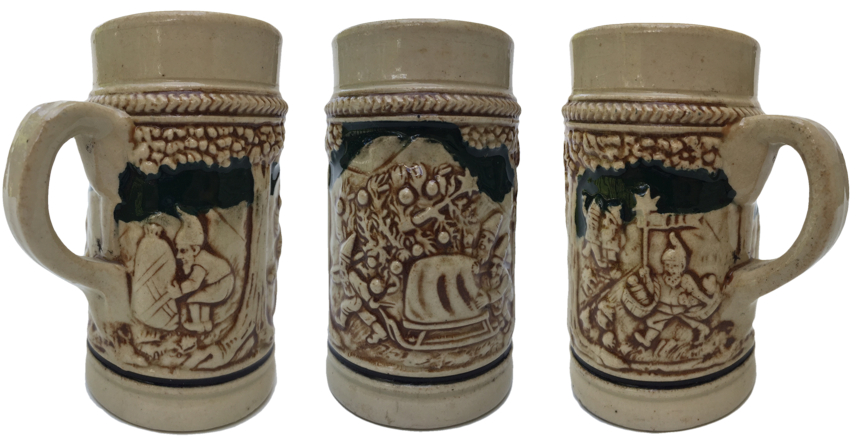
|
The celebration that St.
Nikolaus Day has become entwined with is the celebration of the birth
of the Baby Jesus to Mary and Joseph in the town of Bethlehem. The
front of each of the three steins next shown depicts Joseph leading the
beast of burden with Mary atop. An interesting detail is of Mary
holding an evergreen Christmas tree.
Each of the three steins shows a side scene of sheep in the field (two
show tthe sheep on the right, one chose to show them on the left). This
scene is apparently
representative of the flocks left behind by the shepherds who had
rushed to the manger to see the Baby Jesus after the angel had appeared
to them telling them that the Messiah had just been born.
The remaining
sides also differ. Two of the steins have a town scene which may
represent Bethlehem. The third has an evergreen tree decorated with
candles.
As time goes on, I look forward to
possibly adding additional Christmas Season Miniatures and would be
interested in others sharing their seasonal pieces. |
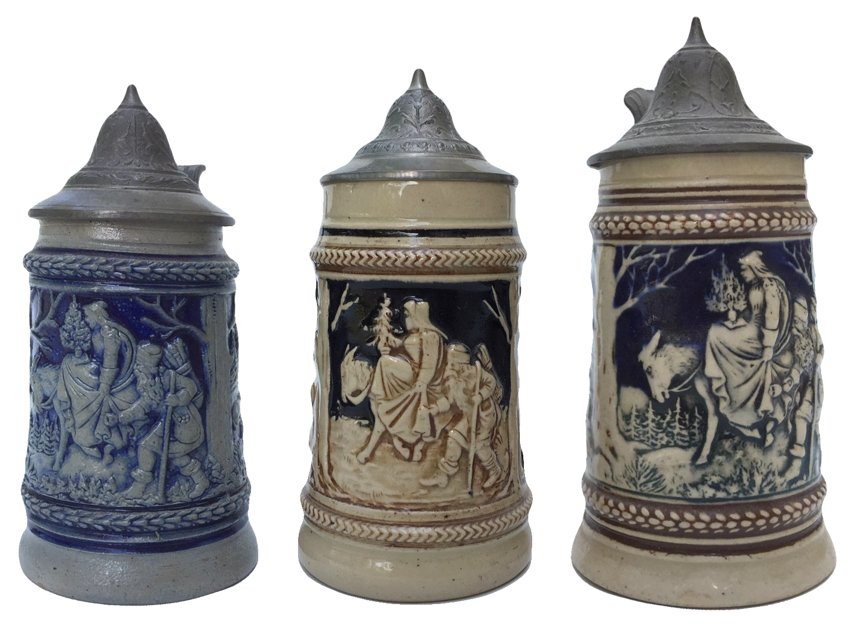

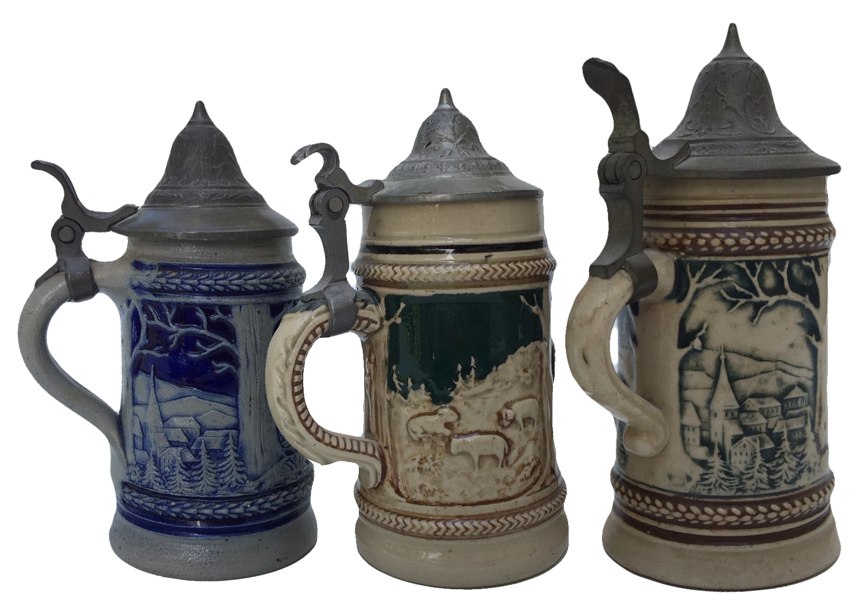 |





